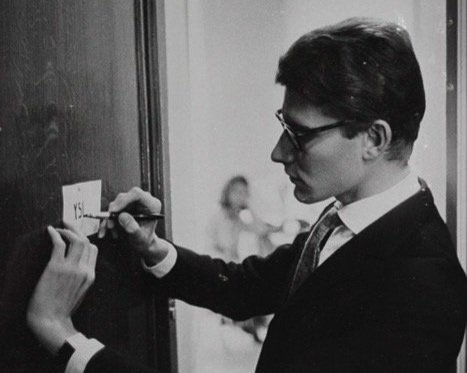What Anna Wintour’s Vogue Departure Means for Luxury
Anna Wintour has stepped down as Editor-in-Chief of Vogue U.S. after almost four decades. Though more calculated repositioning than the full close of a chapter—it still marks the end of an era.
Wintour remains firmly entrenched in the global infrastructure of Condé Nast as Chief Content Officer and Global Editorial Director of Vogue, roles that underscore an essential truth: this is not retirement, it is the relocation of influence. Her continued presence in global strategy ensures that the Vogue brand—still synonymous with a certain echelon of style—retains continuity at the top.
For luxury brands accustomed to Wintour’s editorial precision and cultural clairvoyance, this means the machinery behind prestige remains intact. But the absence of her editorial hand from American Vogue’s day-to-day signals a deeper unraveling of the centralized model that defined her reign.
Not Retirement, But Relocation
Wintour’s transition is less an exit than a strategic shift from U.S. tastemaker to global steward. While she no longer oversees Vogue’s American editorial voice directly, she remains the architect behind the brand’s global content vision. Her continued oversight of Vogue’s international editions means she is still shaping the cross-border narrative of luxury, beauty, and style culture.
For brands, this continuity offers reassurance: partnerships, campaigns, and high-stakes cover placements still pass through her gaze. But editorial power in the U.S.—once a singular conduit—has fractured, and with that comes both uncertainty and possibility.
Luxury Editorial Authority in Flux
For decades, luxury brands and Vogue operated in a kind of sacred symmetry. Designers designed, editors curated, and readers aspired. Wintour’s imprimatur validated not just collections, but entire careers. She translated couture into cultural capital, shaping public perception with each carefully constructed editorial spread.
But that dynamic is no longer absolute. Power is dispersing. Digital platforms, social media creators, and brand-owned channels have chipped away at the gatekeeping model. The once-rigid hierarchy of influence has dissolved into a constellation of voices. Prestige now shares space with popularity, virality, and niche authority.
Luxury finds itself at a crossroads: cling to a legacy system of editorial curation—or embrace the volatility of decentralized influence.
What the Transition Means for Luxury
Wintour’s step back from U.S. operations creates a void—and a window. For some heritage maisons, the loss of a predictable editorial partner may pose a risk. The seamless pipeline from Paris runway to Vogue feature is no longer guaranteed. Prestige, once passively inherited through proximity to Vogue, must now be actively earned across diverse media terrains.
Yet for emerging designers and contemporary labels, the change is liberating. Without a single gatekeeper, the path to relevance can be faster, freer, and more culturally responsive. Agility, not legacy, becomes the new advantage. For luxury brands, the challenge is balancing the gravitas of tradition with the dynamism of the digital age.
Who Carries Cultural Curation?
The question isn’t merely who will replace Wintour at Vogue—but whether Vogue can still serve as the sole compass of taste. Chioma Nnadi, now Head of Editorial Content at British Vogue, is a voice of thoughtful evolution. Edward Enninful remains a potent force in editorial storytelling. But the future may not rest solely in the hands of editors.
Creative directors like Jonathan Anderson (formerly Loewe, now Dior) are shaping the visual and emotional language of luxury more than any publication. Digital-first platforms, stylists, art directors, even AI-powered curators are all influencing the narrative in real time.
Simultaneously, brands are building their own editorial engines—crafting immersive storytelling experiences that sidestep traditional media altogether.
Luxury Reinventing Influence
Consider Chanel’s self-produced short films—moody, cinematic, evocative. Or Loewe’s surrealist campaigns that read more like gallery exhibitions than product showcases. Gucci’s multi-dimensional “Capsule” collections and Balenciaga’s dystopian digital provocations are less about approval and more about authorship.
These houses are no longer waiting for validation from Vogue. They are building their own ecosystems of taste, influence, and culture. Meanwhile, brands still seeking editorial validation must adapt—leaning into authenticity, emotional resonance, and global perspective to maintain cultural relevance. The Wintour model of prestige-through-placement is evolving into a model of prestige-through-presence.
Symbolism Over Substance
Wintour’s departure from the American editorial throne is not merely logistical—it is symbolic. It marks the end of centralized authority in luxury media. The archetype of the omnipotent editor is giving way to a more fractured, fluid, and participatory structure of influence.
Brands that once relied on a singular narrative must now engage across multiple touchpoints. Luxury is no longer defined solely by scarcity or polish—it is expressed through meaning, multiplicity, and nuance. Multimedia, interactivity, cultural hybridity: these are the new codes of aspiration.
Rethinking Authority in Luxury
Anna Wintour’s departure from Vogue U.S. closes the gilded door on an era of editorial absolutism. The throne she occupied was real—but it may be the last of its kind. Today, influence isn’t inherited. It’s co-created.
The future of luxury will be shaped not by a singular gaze, but by a chorus of perspectives—global, inclusive, unexpected. The monarchical model of taste is giving way to something more complex, more communal, and—perhaps—more imaginative. And in that shift lies the promise of what luxury can become.
































